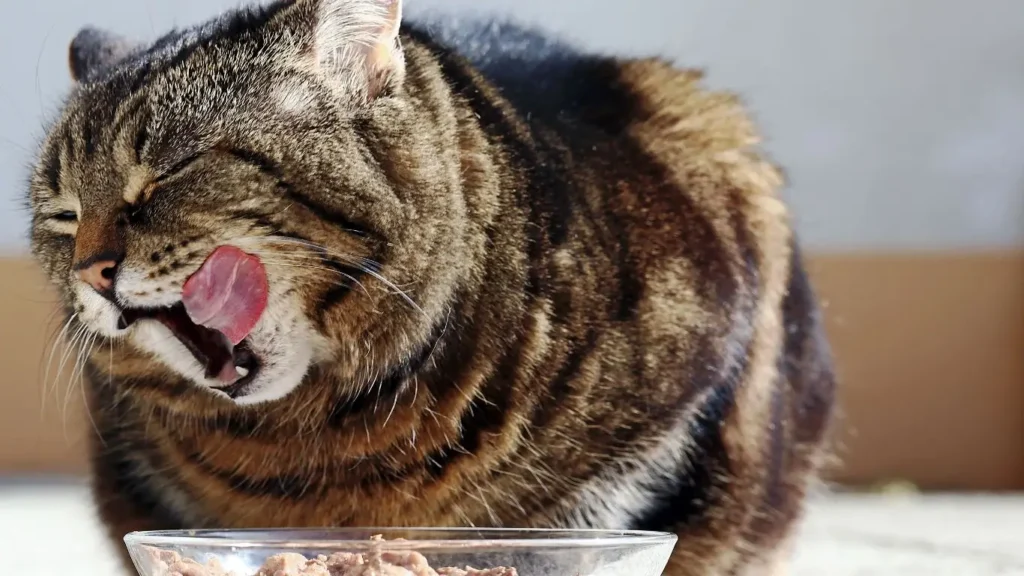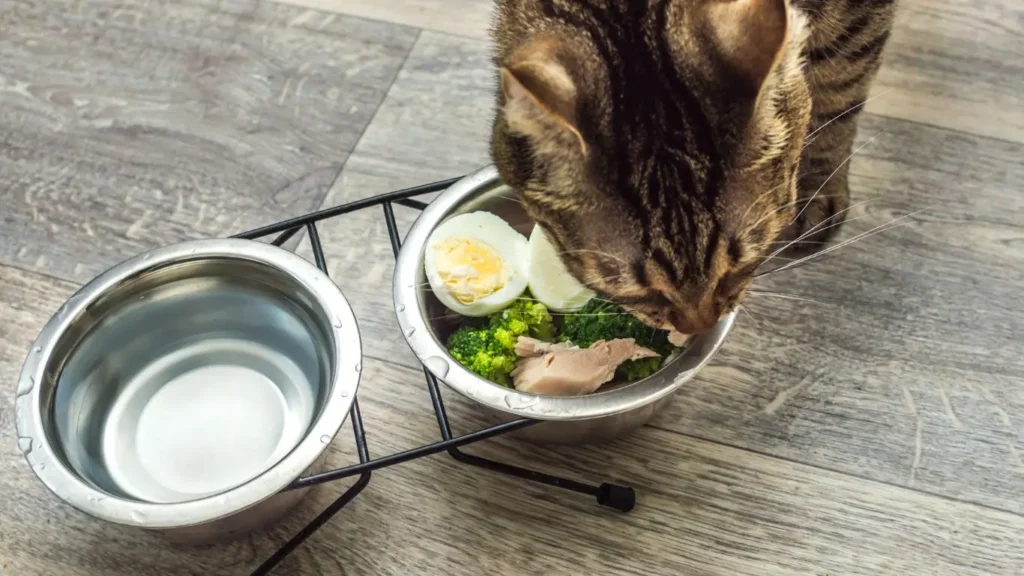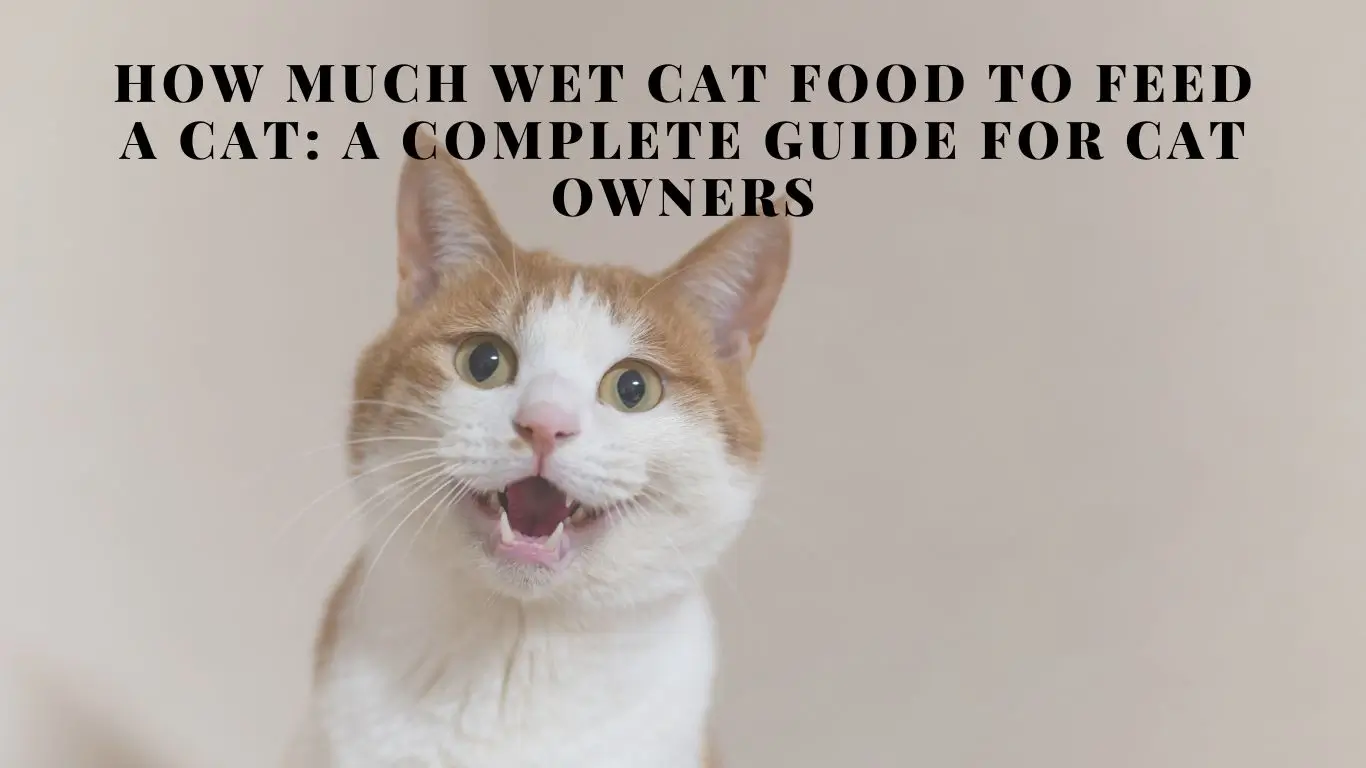If you are a responsible pet owner, you may have wondered, “How much wet food should a cat be fed?” Wet food is not only delicious for your cat, but also essential for their health and hydration.
In this guide, we’ll discuss why cats need wet food, the right amount to consume, and how often it should be given. Also included are some important tips for selecting and storing wet food. Know the best way to keep your beloved cat happy and healthy!
Why Cats Need Wet Food

Wet food is a nutrition -rich and delicious option for cats. This not only meets their health requirements, but also helps to meet their daily water requirement. To understand the importance of wet food, the importance of nutrition and hydration, let’s know it in detail.
Benefits of Wet Cat Food for Hydration
Cats often have problems in drinking sufficient amount of water. Hydration benefits of wet cat food make it an essential option.
- Increases Hydration Levels
Wet food contains up to 70-90% water, which helps to meet the daily water requirement of cats. If your cat does not drink water directly, wet food can solve their hydration problem.
- Delicious and Attractive
In wet food, fragrance and texture occur that attracts cats immediately. This is an ideal choice for picky eaters, whose food habits are often selective.
- Helpful in Breathing and Digestion
The soft texture of wet food makes it easier to digest, especially for cats that are older or weak digestive capacity.
- Reducing the Risk of Water
Cats may have urinary tract infection and other health problems due to lack of adequate water. Wet food is helpful in reducing these risks.
Nutritional Advantages of Wet Cat Food
Wet food is very useful to meet the nutritional requirements of cats. This fulfills the lack of nutrients required in their diet.
- High Level of Protein: Wet food contains up to 10–13% protein, which is necessary to maintain the strength and energy of the cats’ muscles.
- Fats and Energy: Wet food contains up to 2-10% of fats, which help to keep the skin and coat healthy. It is a good source of Steady Energy.
- Low Carbohydrate: The biological structure of cats is not able to easily digest carbohydrates. The amount of carbohydrates in wet food is less than 10%, which makes it corresponding to their biological needs.
- Helpful for Senior Cats: Wet food is an ideal choice for older cats as it puts less pressure on their teeth and digestive systems.
How Much Wet Food to Feed a Cat
Each cat’s nutritional needs are different, and it depends on their age, weight, activity level and health. While fixing the amount of weight food, pay attention to the following things:
- Suggestions on the Package: Most weight food companies, such as Farmina® N&D Prime Chicken & Pomegranate, suggests 3.25 cans for a cat weighing 10 pounds per day.
- Personalized Advice: Always consult your vet, as your cat needs may be different.
- Health and Lifestyle: If your cat is active or suffers from some disease, it may require more or less food than normal.
General Wet Food Feeding Guidelines by Cat Weight
To ensure the correct nutrition of cats, it is important to understand their weight and life-phase.
- Important Factor
- Age: Small kittens (kitans) require more calories because they grow rapidly.
- Weight: Heavy cats require more energy to maintain their body functions.
- Activity Level: Less active cats living indoors may require less food than outside active cats.
- Pregnancy and Breastfeeding: Pregnant or milk-feeding cats require 25-50% more calories than normal.
- Spay/Nutor Status: The baseline metabolism rate of cats after a spy or neutor is reduced by about 30%.
Do cats require special diet?
Yes, cats are an obligate carnivore. This means that their food should include high quality protein and essential amino acids such as torin.
Wet Food Feeding Chart for Cats (Detailed Table)
This chart of the right weight food amount will be helpful for them based on the age and weight of the cat:
| Cat Age | Cat Weight | Daily Wet Food | Daily Feedings |
|---|---|---|---|
| Up to 1 week | 3–7 ounces | Kitty formula: 25–65 ml | 12 |
| 1–2 weeks | 5–14 ounces | Kitty formula: 40–110 ml | 10–12 |
| 2–3 weeks | 12–16 ounces | Kitty formula: 110–125 ml | 6–8 |
| 3–4 weeks | 1–1.5 pounds | 40 g wet food | 6–8 |
| 4–8 weeks | 1.3–2.6 pounds | 65 g wet food | 3–4 |
| 2–3 months | 2.2–4 pounds | 65–110 g wet food | 3–4 |
| 3–6 months | 3.5–7 pounds | 130–165 g wet food | 3–4 |
| 6–9 months | 6–10 pounds | 160–215 g wet food | 2–3 |
| 9–12 months | 7–15 pounds | 150–300 g wet food | 2–3 |
| 1–5 years | 8–20 pounds | 160–365 g wet food | 2–3 |
| 5–10 years | 8–20 pounds | 160–365 g wet food | 2–3 |
| 10+ years | 8–20 pounds | 160–365 g wet food | 2–4 |
How Often to Feed Cats Wet Food
How many times the cats should feed wet food depends on their health, age, and catering requirements. Here you are given some things to note:
- Cat Dependent on a Completely Wet Food: If your cat is completely dependent on wet food, divide its daily dose into 2-3 food. This gives him equal nutrition throughout the day.
- Wet and Dried Food Mixture: If your cat also eats dry food and you want to supplement it by eating wet, you can give it 1-2 times a day. Make sure that the total calorie needs of dried and wet food are correct.
- In Special Circumstances:
- Dental Problems: For cats that have tooth problems, it is easy to chew wet food.
- Nose Closure: The fragrance of wet food helps to increase their appetite.
- Veterinarian’s Advice: If your cat is coming out of the hospital, then follow the special wet food suggested by the doctor.
- Treat on Special Occasions: If your cat is ill or you want to please her, you can give wet food as treatment.
Important Tip: To prevent your pet from eating more, take care of all types of food and treatment calories. Extra weight can cause health problems.
Combining Wet Food with Dry Food: Best Practices
The right way to feed cats wet and dry depends on their taste and habits. Below are some of the best ways:
- Gradually Introduction: If your cat only eats dry food, include wet food slowly. On the first day, add one teaspoon wet food to dried food. If the cat does not like it, adjust the amount of wet food.
- Regular Food: Giving food to the cat at the same time every day establishes its routine and helps to detect any unusual behavior.
- Selection of High-Quality Food: A wide variety of dried and wet cat food is available in the market. Select high quality food, which includes essential vitamins and minerals.
- Availability of Water: Since dried food is low in moisture content, make sure that fresh water is always available with the cat.
- Nutrition Balance: A mixture of wet and dried food gives the cat required nutrients. However, it is important to consult a veterinarian before any new dietary change.
By mixing wet and dried food, your cat gets a balance of variety, taste, and nutrition, which is beneficial for its overall health.
What to Consider When Choosing Wet Cat Food

When choosing wet cat food, pay attention to protein quantity and quality. Carbohydrates should be low, and fats and omega fatty acids should be in sufficient quantity. Avoid artificial colors, flavors, and preservatives.
Read the ingredient list and make sure the key ingredients are clear and nutritious. The humidity level should be above 80% so that your cat remains hydrated and healthy. Choosing the right food can improve your cat’s quality of life.
Understanding Cat Food Labels
Wet cat food labels may seem easy to read, but it provides a lot of important information.
- Product Name: It exposes the main material. For example, “Chicken Cat Food” should have at least 95% chicken.
- Material List: The material is given in a decreasing order according to weight.
- Garantie Analysis: It mentions the amount of protein, fat, fiber and moisture.
- Feeding Instructions: It suggests how much food to give.
- Nutrition Suitability Statement: It indicates which age of food food is for cat.
Ingredients to Look for in Quality Wet Cat Food
- Protein
- Cats are carnivores, and they need protein.
- Sources: Chicken, turkey, beef, fish and organ meats.
- According to AAFCO: 26-30% crude protein is required.
- Role of Taurine: It is important for heart and eye health.
- Fats and Oils
- Fat is the main source of energy.
- Important Fatty Acids: Omega-3, Omega-6, DHA.
- Source: Chicken Fat, Salmon Oil.
- Fat Level: About 9% on dry matter basis.
- Carbohydrates
- Cats do not need carbohydrates.
- Source: Potatoes, peas in limited quantity.
- Level: Less than 10% on dry matter basis.
- Fiber
- Helps digestion and controls hairballs.
- Source: Beetroot Pulp, Psyllium Husk.
- Level: 3-5% on dry matter basis.
- Vitamins and Minerals
- Vitamins A, D, E and K are essential for cats.
- Calcium and phosphorus are important for bones.
Common Additives to Avoid
Some additives may be harmful to your cat’s health. Try to avoid the following:
- Artificial Colors: which can cause allergies or other health problems.
- Artificial Preservatives: eg BHA, BHT, and Athoxicwin.
- Phillars: Such as maize, wheat, and soy, which are low in nutritional value.
When choosing a wet cat food, taking these points in mind, you can ensure a healthy and balanced diet for your cat.
Conclusion
Understanding the benefits of eating wet cats, importance of nutrition and right amount is an important step to improve your cat’s health.
In this guide, we have discussed hydration, nutritional benefits, and correct feeding guidelines. Choosing the right food and serving it properly can make your cat healthy and happy.

